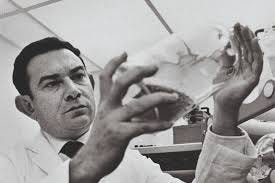Why Aging isn't a Problem to Solve
Longevity gurus and where they are wrong
Title: The Clock in Our Cells: Why the Hayflick Limit Still Matters
We all want to live longer. We read the Blue Zones books, follow the biohacking influencers, and chase down the latest supplement promising to "reverse aging." Longevity is a billion-dollar industry built on the belief that we can outsmart time.
But decades ago, a scientist quietly proved that our cells are on a schedule. No matter how clean you eat or how many mitochondria-boosting capsules you take, there is a biological boundary that governs aging. His name was Leonard Hayflick. And his discovery? The Hayflick Limit.
In this week's episode of Dr. Simpson Unfiltered, I dive into Hayflick's groundbreaking research—and how my own scientific career started with fascination for the very thing he uncovered: cellular aging.
Hayflick's Insight: Aging Under Glass
As a young undergraduate at Stanford in the 1970s, I had the chance to speak with Hayflick. He had grown human fibroblasts in culture—cells we can watch divide in a glass container. They kept dividing... until they didn’t. Not because they were sick or starved. They just... stopped.
When Hayflick mentioned this to his colleagues over lunch, one joked, "Maybe they’re just tired. Maybe they’re old." And that was the eureka moment: he was witnessing aging in a dish.
The idea ran counter to what scientists believed at the time. Cells were thought to be immortal. Aging, many argued, was purely external—due to disease, environment, or bad habits. Hayflick proved otherwise. Our cells have a clock, and that clock runs out.
The Mechanism: Telomeres and the End of the Line
Later research revealed that each time a cell divides, the telomeres on the ends of chromosomes get shorter. Eventually, they shorten so much that the cell can no longer safely divide. That final division? That’s the Hayflick Limit.
Why It Still Matters
Some longevity influencers claim they can override this limit with NAD/NADH supplements, telomerase activators, or whatever’s trending on TikTok this week. But the reality?
NADH might perk up mitochondria.
Telomerase might help in a petri dish.
But do they extend life in humans? Not convincingly. If they did, I’d give every capsule to my 15-year-old dog.
Hayflick's Wisdom
Hayflick, who passed away in 2024 at age 96, didn’t view this limit as a flaw. In fact, he saw it as a feature—a necessary way to refresh humanity. In a 2001 interview with The Guardian, he said:
“Anyone who believes in manipulating the human aging process is a terrible pessimist. I don’t want to give another Adolf Hitler, a Saddam Hussein, another 50 years of life.”
“Every time someone like that dies a natural death, people should thank their God, whoever that might be, for the phenomenon of aging.”
Want to Do Something About Aging? Start Here:
No, you can't beat the Hayflick Limit. But you can age well:
Eat a Mediterranean-style diet.
Sleep enough.
Exercise often.
Treat high blood pressure and cholesterol.
Vaccinate.
And maybe—just maybe—adopt a senior dog. They won’t live forever, but they’ll give you everything they have.



